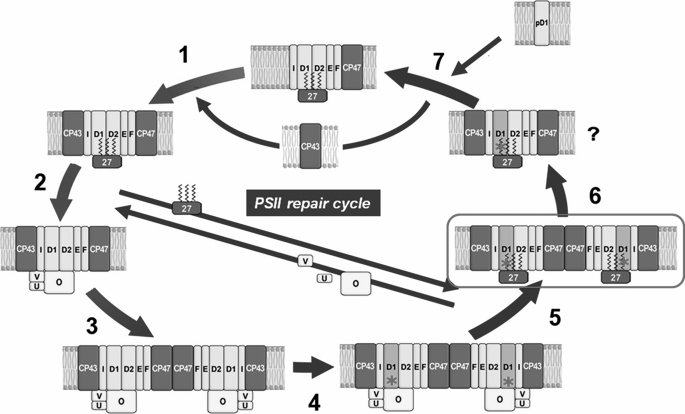FIGURE 8.
Model of the PSII repair cycle in cyanobacteria. After formation of the monomeric PSIIM(low) complex (step 1), this is activated by assembly of the water-oxidizing complex. This process involves release of Psb27 and attachment of the extrinsic proteins PsbO (O), PsbV (V), and PsbU (U) (step 2). Thereafter, the active monomer PSIIM(high) dimerizes (step 3) to the full active PSII complex PSIID(high), which represents the dominant PSII species in the thylakoid membrane. Damage to the D1 subunit in one or both of the monomers (indicated by red asterisks) results in the PSII dimer PSIID(low), with diminished oxygen-evolving activity (step 4). This dimer is transformed into the inactive PSIID(inact) for the exchange of the D1 subunit (step 5). Presumably, this complex monomerizes (step 6) before CP43 is detached and the newly synthesized pD1 protein is inserted (step 7).

